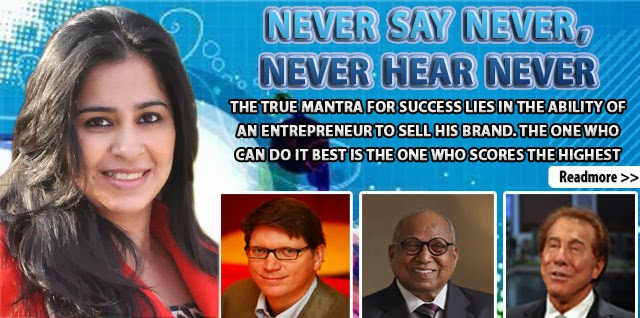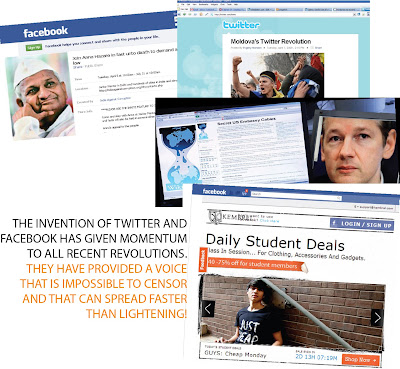MARKETING GOES BEYOND
The best of products and marketing campaigns may fall fl at when it comes to the customer. And this may be despite the best of market research backing them. But a marketer who understands the customer’s mind can utilise the 4Ps strategy in a more optimal manner; leading to stupendous results
It’s turning out to be a year of new launches, making the market place more interesting and competitive. Palm launched its glitzy mobile phone “Pre” making Apple really shaky and nervous, with Apple wanting to sue it for copying the iPhone touchscreen. Microsoft has launched, rather relaunched its internet search engine with a new name Bing – planning to take Google headlong in the battle of the “searches”. Yes, this time – innovation seems to be the key to survival. But will plain innovation be enough to make a product survive?
THREE STORIES TO ILLUSTRATE
1ST STORY
100 students at MIT’s Sloan School of Management were shown an advertisement of the magazine – The Economist. It was a subscription ad, urging readers to pick the type of subscription they wanted to buy or renew. Three offers were on display:- 1st Offer: Internet subscription for $59 2nd Offer: Print subscription for $125 3rd Offer: Print and Internet subscription for $125
Out of the 100 students, 16 students opted for the first offer, zero students for the second, and 84 students went for the third offer. Now no one in their right minds would even remotely think of going for the second offer when at the same price, you got a bigger and better bargain when you selected the third offer.
So the researcher Dan Ariely decided to do away with the 2nd offer (after all no one went for it in the first round); this time again, 100 students were asked to fill up the subscription form. The results spoke a different story; 68 students chose the first offer of $59 for Internet only, while only 32 chose the $125 subscription, which offered the combination of print and Internet. While it appeared to be the most lucrative option the first time, what was it that made it look so lackluster the second time?
2ND STORY
It was a basement-run operation when it started. Today it’s grown into a huge business with branches spread all over the world. The company is Amway Corporation. The company has used a technique whose power is indisputable. It calls this BUG. Before you draw up any conclusions, the BUG in nothing but a collection of Amway products – the furniture polish, detergent, shampoo, deodorizers etc. all put together in a specially designed tray. Each salesman is trained and instructed that he has to necessarily leave this BUG in the prospects house for 24-72 hours, without charging her anything or putting her under any obligation to buy. She was just expected to try the product. When the salesperson returned to collect the free samples (BUGs), most of the customers bought at least one product. The BUG, true to its name, was working like magic. What was it that suddenly made the same products so good, that all sales shot up so fast?
3RD STORY
An owner of a jewellery store found that she was unable to sell a collection of turquoise jewellery. She tried as hard as she could, but nothing worked. As a last resort, during the peak tourist season, she asked her saleswoman to put a note on the turquoise jewellery section announcing “Everything at ½ (half) price”. As expected, everything was sold within a few days. However, the shocking part was that the saleswoman had not heard her correctly and instead of putting everything at “½” she had put them at “2x” i.e. double the price. Why did it all sell?
MIND GAMES
In the first story of “The Economist” subscription, the 2nd option of $125 for print subscription was included (even though it sounded totally illogical at first glance) to send 84 out of 100 people to reach out for the 3rd option. The 3rd option seemed like a “steal” when compared to the second. The 2nd option acted as a decoy – for when the decoy was removed the choices changed completely. As humans we always compare especially when we are not sure of what we want (and most of the times, with so many choices around adding to the confusion, we are not sure, not clear which is the best). This superbly intelligent advertisement of The Economist gently pressured us to go for the more expensive option by making it look most lucrative in comparison to the other option!
In the 2nd story of Amway’s sudden increase in sales the success had nothing to do with improved quality of the product, or price change, but rather the use of a “trick” to which mankind has succumbed to since time immemorial. It’s the magnetic power of the word “FREE”. Yes, “free anything” is always welcome. Amway combined “free” with “reciprocity”. The “reciprocity rule” says Robert Cialdini, binds us into doing something in return for a gift received by another. Amway’s “free trial” put many customers under obligation to buy – at least on product.
In the 3rd story, the unintentionally high pricing worked wonders on the minds of the buyers. High priced jewellery is always associated with high quality. So just when the owner of the jewellery shop thought that a reduction in price would rid her of these products which refused to sell, it was the obnoxiously high price that did the trick.
DID ANYONE MENTION PRODUCT?
A whole lot of new and interesting products are being launched this time. In 2005, more than 1,56,000 new products were launched, which boils down to a new product being released every 3 to 4 minutes. Yet, when it comes to remembering brand names, we remember only some and use even fewer ones. The rest all disappear sooner or later. Almost 80% of all products launched fail. Many a times they are not necessarily bad – it’s just that something fails to click in the minds of the consumers. Gone are the days when just offering a product of great quality was sufficient to ensure its success. It is the “image” that conjures up in the minds of the consumers which is most important today. We call this image – a “Brand”.
Back in 1996, British Airways went though an expensive re-branding exercise. In a bid to get a new look, the company changed the tail-fin design of its planes. Instead of sporting the colours of its National Flag, the Company started using different images – to make the airlines look more international. The British hated it. They wanted Britain’s flagship airline to look more British. Richard Branson didn’t miss the opportunity. He sensed the dissatisfaction of the people and immediately painted Union Jacks on its aircraft with the slogan – “Fly the Flag”. BA was forced to return to its old design – if it wanted to stay in business.
A supermarket operator one day realized that his cheese was not selling well. He put out the cheese and invited customers to cut off slivers – as free samples. He sold one thousand pounds of cheese in a few hours.
In today’s world, marketing is “perception building”. You need to understand why people reach out for a product. Those who have used a Nokia phone would rarely switch to a Sony Ericsson. Not because the latter is bad but because they are so used to the way Nokia phones function.
As a marketer, today your primary job is not to look at what your product has to offer but rather what is it that will motivate your target audience to buy your product.
HOW DO I KNOW WHAT WILL WORK?
Yes that’s the million dollar question. The answer to it is not easy; sometimes the quickest answer people give to this question is – do market research.
Ford Motor Company once asked Americans what features they wanted the most in their cars. Keeping all the points in mind, the company came up with the “American car”. It flopped.
In the 1970’s, Pepsi introduced the “Pepsi challenge” where consumers were blind-folded and asked to taste the two colas and give their preference. Most of the participants preferred Pepsi. Pepsi used these research findings and announced to the world that the “Pepsi generation” had arrived and Pepsi was the choice of the young and happening. A totally shaken up Coke decided to change hurriedly to keep up with the times and worked on a new flavour. The test-marketing brought a positive response from the market and in 1985, the New Coke was launched. What seemed like a flawless move turned out to be the worst blunder in the history of Coca Cola. Sometimes, consumer research fails to reveal the true emotions and passions of the people. Coca Cola was the “Real thing” and no one wanted a “New” flavour. They loved the “Old” and Coca Cola had to bring back its original flavour. The moral of the story is – marketing is a battle of perceptions, not products. So “listen” carefully. Sometimes a product may succeed even though research reveals no demand for it. Steve Jobs never, ever does any market research; yet the man and his inventions have changed the world. No amount of market research could have revealed the need for a home-computer when Steve Jobs started creating it. The consumers had no idea that a mobile phone could be made to look like an iPhone. No amount of market research would have let Akio Morita predict the thundering success of the “Walkman”. Yet all these inventions created history, or rather changed history!
A clever marketer is one who knows when to rely on his gut feel. A clever marketer is one who has his hand on the pulse of the consumer. He understands and believes that a brand is defined as “a bundle of audience perceptions about a product or service”. Gone are the days when just making a good quality product would ensure sales, gone are the days when you could beat competitors on the basis of just an ad, correct price and good distribution. Today you need to have the ability to understand the consumer’s mind and plan your 4Ps - price, product, place, promotion accordingly.
After all, marketing today goes beyond the understanding of the 4Ps.


Comments
Post a Comment